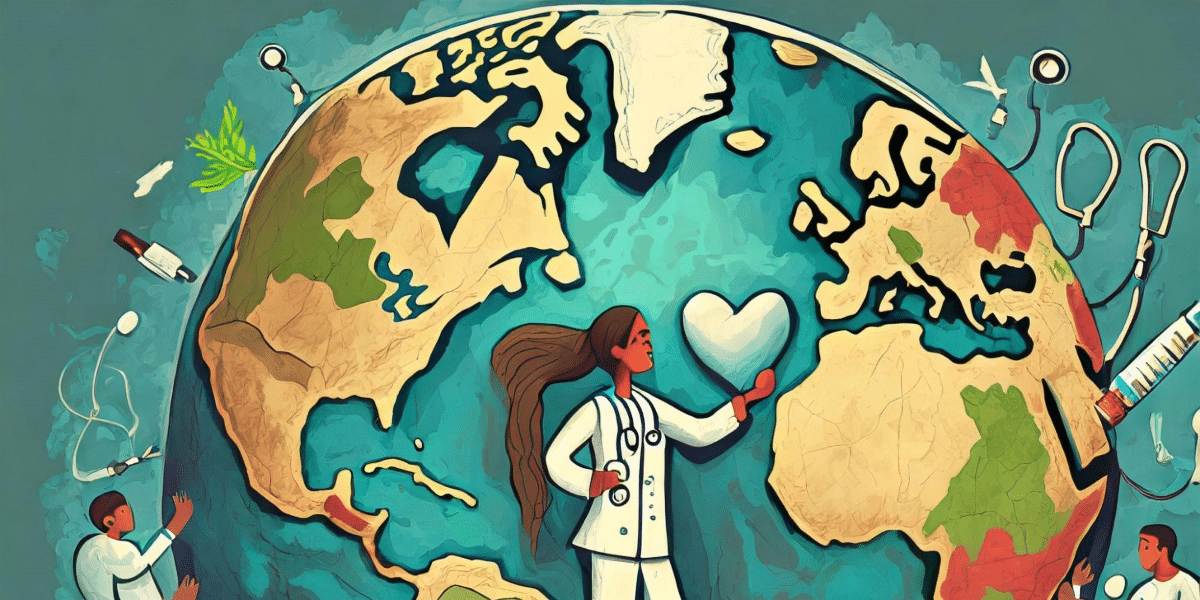By Dr. Seleem Choudhury
According to the World Health Organization (WHO), 1.8 billion people live in a classified conflict zone, equal to 23% of the global population (World Health Organization, 2024). As the University of Cambridge’s Centre for Research in the Arts, Social Sciences and Humanities (CRASSH) analysis indicates, conflict in modern times tends toward the “purposeful destruction and destabilisation of civil society, making non-combatants a main target,” with disregard for the rules of war, international humanitarian law, and human rights (CRASSH News, 2023).
These conflicts have a “tremendous impact on healthcare provision and access to healthcare,” ranging from rampant disease (both communicable and non-communicable), traumatic injuries, and mental health challenges to maternal, women, and child health issues (CRASSH News, 2023).
The Global Peace Index (GPI), produced by the Institute for Economics and Peace (IEP), is the world’s leading measure of global peacefulness. According to its 2023 report, the average level of global peacefulness deteriorated for the ninth consecutive year, with 79 countries recording a deterioration (Vision of Humanity, 2023; Institute for Economics and Peace, 2023). Additionally, deaths from global conflict increased by 96% to 238,000 (Institute for Economics and Peace, 2023).
Healthcare is vulnerable.
The Geneva Conventions, customary international humanitarian law, and other treaties include provisions that clearly identify attacks on health workers and patients as a violation of international law. Regrettably, these are routinely ignored or are not codified into national legislation in the countries where these acts occur. (Rubenstein, & Bittle, 2010).
Population inequity
In their 2022 study, Bwirire, Crutzen, et al., stated that violent conflict is a “primary driver of health inequalities.” Conflict zones experience diminished access to healthcare, educational opportunities, and wealth, all of which impact health inequalities. Even in the aftermath of conflict, these issues reverberate as people recover mentally and physically in areas that have experienced organized violence (Ramadan, Tappis, Villar Uribe, & Brieger, 2021).
Protecting health systems
International humanitarian law (IHL), also referred to as the “law of war” or the “law of armed conflict,” is a detailed universal set of rules that “seek humanitarian reasons to limit the effects of armed conflict. It protects those who are not, or are no longer, taking part in the fighting, and sets limits on the means and methods of warfare” (International Committee of the Red Cross, 2021).
IHL is comprised of international treaty and customary rules that are specifically meant to “resolve humanitarian issues arising directly from armed conflict, both international and non-international” (International Committee of the Red Cross, 2021). The Geneva Conventions of 1949 have been universally accepted, and an increasing number of States are embracing the Additional Protocols established in 1977 and 2005.
However, in the five years after the United Nations (UN) Security Council’s 2016 resolution “committing countries to prevent attacks on health care and hold perpetrators accountable,” more than 4,000 attacks against health workers, facilities, and transports were reported (Physicians for Human Rights, 2021). If medical facilities, staff and supply chain can’t be protected then medical effectiveness is impeded and care impacted.
Building systems
The WHO has long been an advocate of promoting peace for health, and health as a pathway to peace (Coninx, Ousman, Mathilde, & Kim, 2022). The impact of war is immediate on the front lines, but conflicts also displace hundreds of thousands of people, straining health systems nearby. It is vital to protect and sustain health systems especially as they can be instrumental in building trust in fragmented societies (Gilson, 2005). Strengthening these systems is a key step in rebuilding societies riven by conflict.
“Peace and health are inextricably connected, and the two must go hand in hand if we are to offer people basic protections and build secure and healthy societies” (Gilson, 2005). A resilient healthcare infrastructure is built on the understanding that ongoing and protected care programs can both address suffering during a live conflict, but can also have a positive impact on the underlying causes contributing to the conflict. Robust health systems can be “used to improve trust and communication between citizens and the state” or between nations at war (Gilson, 2005).
Rebuilding
In the aftermath of conflict, “multinational forces incur an obligation to rebuild” (Gross, 2021). Several organizations around the world are focused on equipping these nations to reconstruct their communities. One such organization, ReBUILD for Resilience, founded in 2020, offers a model for rebuilding healthcare infrastructure by “examin[ing] health system resilience in fragile settings experiencing violence, conflict, pandemics and other shocks” (ReBUILD for Resilience, 2024). Funded by a £7.68 million grant from the UK government’s Foreign, Commonwealth and Development Office, this international consortium aims to “produce high-quality, practical, multidisciplinary and scalable research which can be used to improve the health and lives of many millions of people” (ReBUILD for Resilience, 2024).

Over a decade after its release, the WHO’s health systems framework continues to guide rebuilding efforts after conflict. This framework highlights several critical factors for rebuilding health systems in war-torn countries. The “building blocks” include service delivery, health workforce, health information systems, access to essential medicines, financing, and leadership/governance, and argues that, “together, these are key to realizing more equitable and sustained improvements across health services and health outcomes” (Fustukian, 2021).
Conclusion
Peace enables good health, just as good health enables peace. Once peace is re-established, there is a window of opportunity to construct a health system that is less constrained by entrenched political interests (Collier, 2009). After war, one of the big problems is a lack of government structure in addition to the “stresses on population health and human rights” (Center for Public Health and Human Rights, 2024).
However, nations included in a conflict zone are not the only countries who quality for reconstruction aid. States at high risk for conflict or in severe financial crisis have a claim for health system assistance from the international community. Stable nations must prioritize offering this crucial aid to those countries who most need support in providing their citizens with a dignified life.
Author’s Bio: An international clinician and operational executive with a demonstrated record of exceeding clinical and financial metrics, for developing talent, for redeveloping strategy and service lines in Academic Hospitals and Health Systems & Community Settings, and for being a positive deviant facilitating change within healthcare. Intimately familiar with U.S. Healthcare’s political, regulatory, and health environment. Experience with strategic planning in complex multi-entity environs and cultures, alignment, and integration, within integrated delivery systems. Passionate about advancing affordable population strategy using data, establishing high quality, safety, and strong relationship building with the objective of improving the patient, family, and the employee and provider experience.
Published by: Nelly Chavez

















